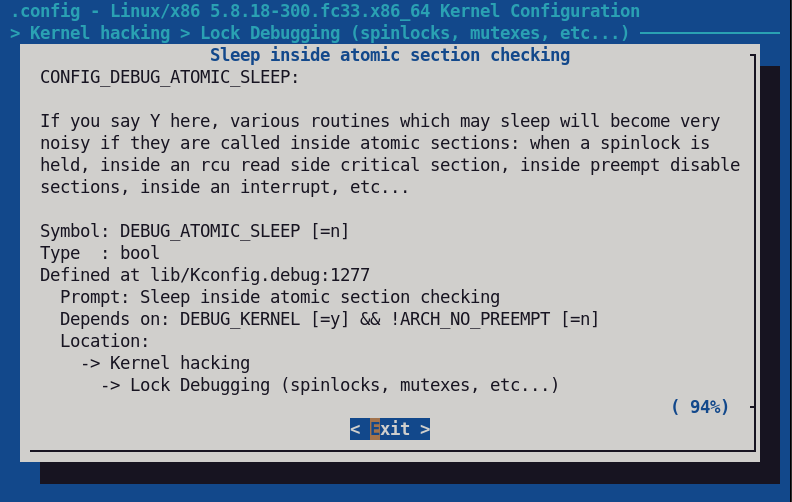Process vs.Atomic Context (Slideshow)¶
Process Context¶
Process context: everything that can be identified by a process ID
Processes (and threads) that execute in user mode ⟶ process address space
Processes (and threads) that execute in kernel mode ⟶ kernel address space
Kernel threads ⟶ kernel address space
Preemption …
Process context is subject to scheduling
Fair scheduling: preemption at end of time slice
Realtime: preemption when higher priority process/thread is runnable
Race Conditions¶
When do race conditions occur?
Two processes/threads share the same address space
Manipulate the same data structure
In kernel address space?
Userspace processes executing a system call (“switch to kernel mode”)
Kernel threads
Protection through locking
Mutexes: locker has to wait until unlocked
Spinlocks: locker loops until unlocked (on different CPU obviously)
Atomic context
Atomic Context¶
Atomic context is where code must not sleep!
Interrupt service routine
Interrupts disabled
No preemption, no scheduling, no nothing
⟶ primary source of latency
Bottom half - code that runs in interrupt context (not subject to scheduling), but interrupts are already enabled
Deferred work ⟶ “tasklet”, “soft-IRQ”
Best avoided because not easily controllable, realtime-wise
All code that holds a spinlock
Atomic vs. Process Context¶
Atomic context must not sleep
Preemption disabled ⟶ prioritization impossible
High latency if atomic code runs for too long
Severe restrictions
Paging
Locking is difficult
…
Process context …
Subject to scheduling ⟶ easily prioritized (be it realtime or not)
Easy locking
Conclusion
Atomic context best avoided
… at least when absolute control is desired
“Sleep While Atomic” Debugging¶
⟶ CONFIG_DEBUG_ATOMIC_SLEEP

